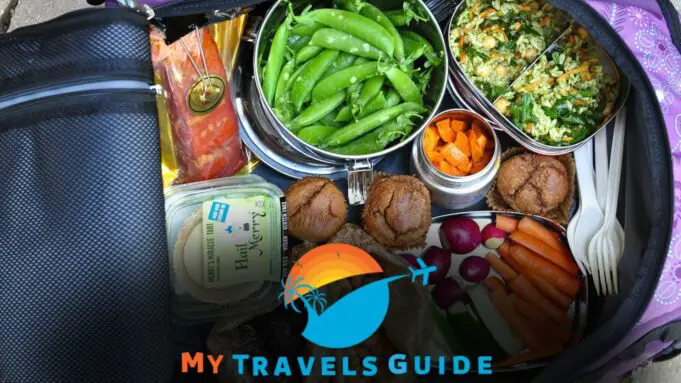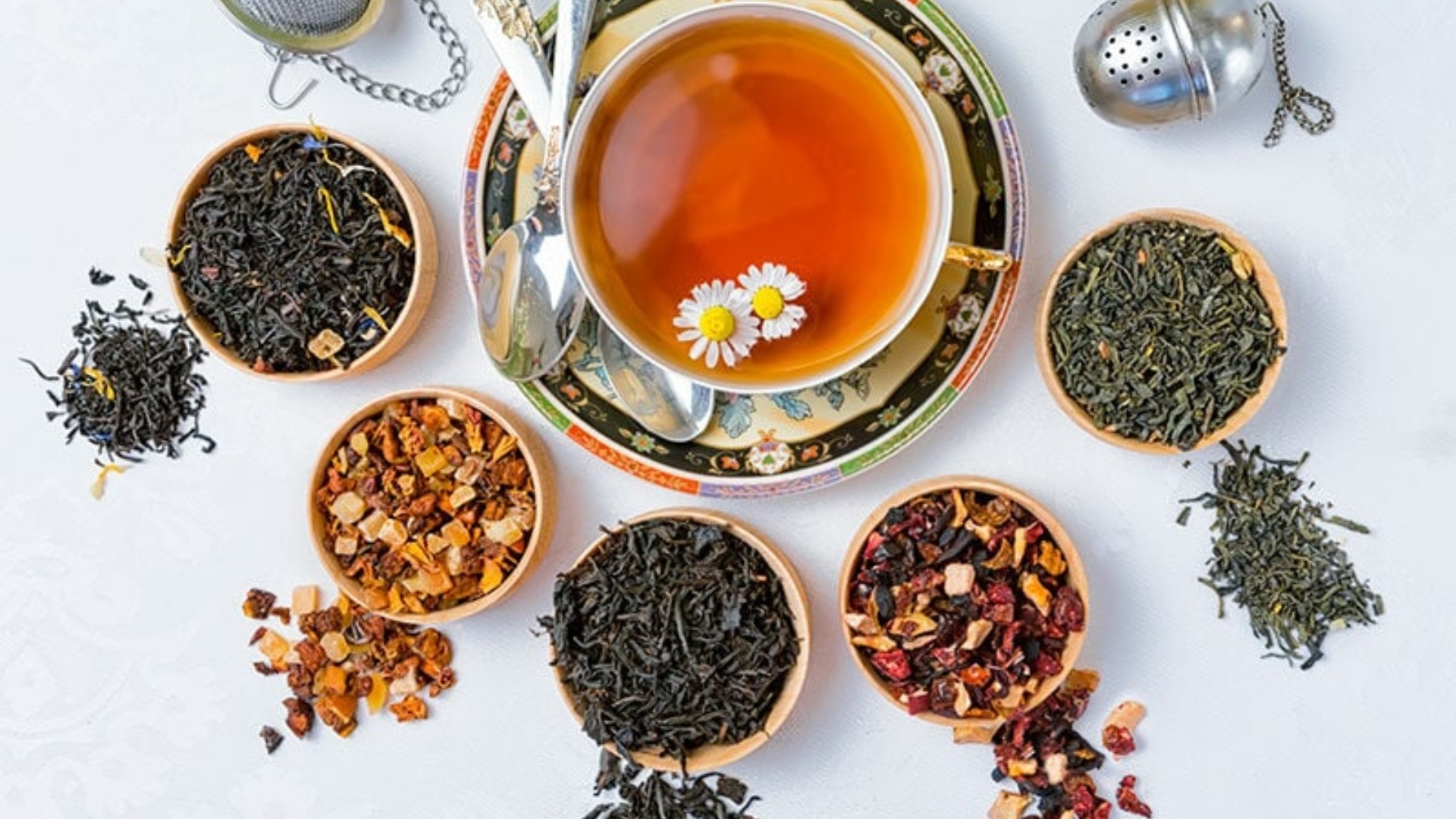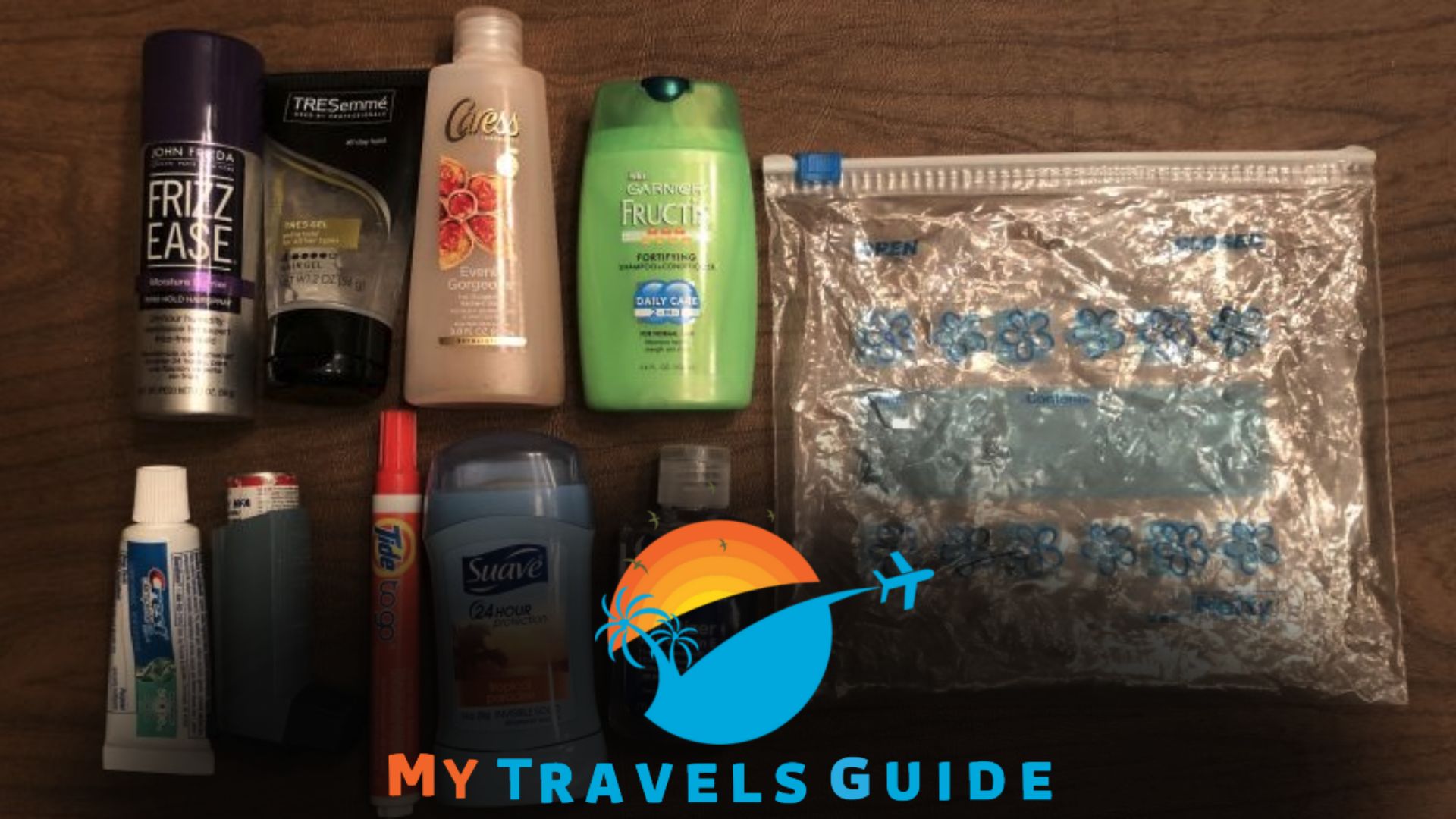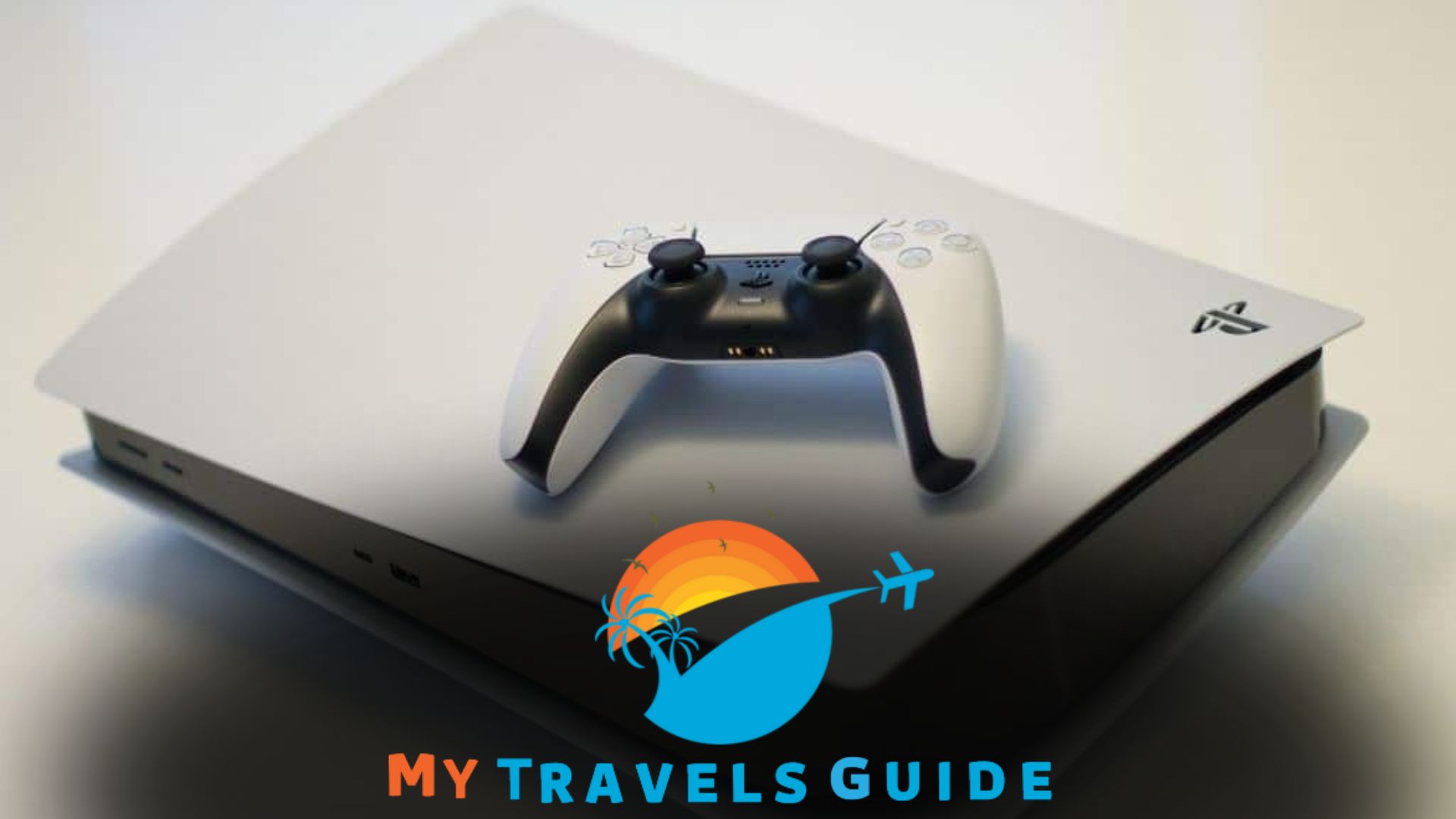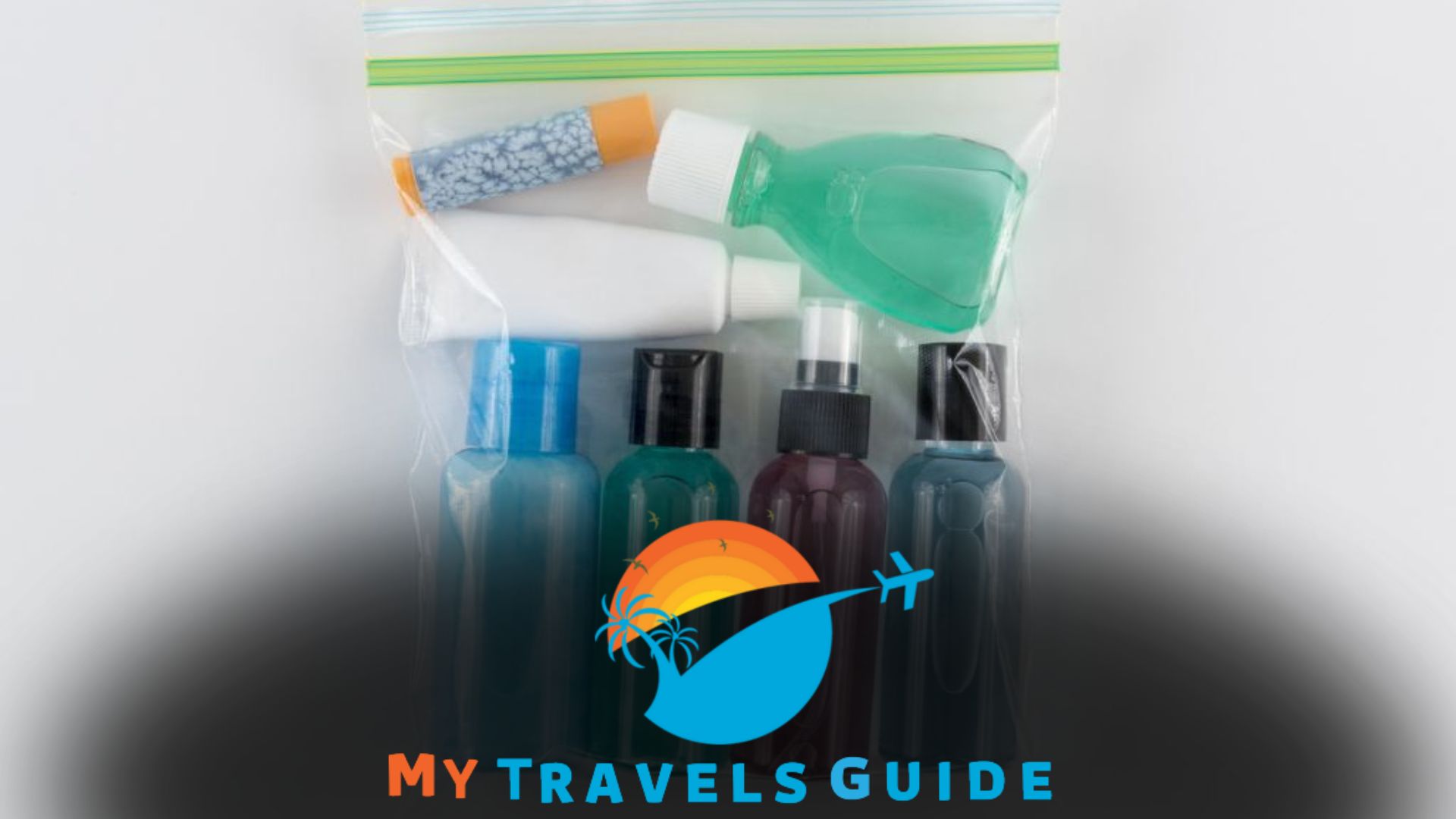In this article:
Airplane food quality can be hit or miss, so packing your own is often recommended. Always consider your preferences and dietary needs before flying.
Choosing what to eat while traveling by air is a common passenger conundrum.
Taste at high altitudes alters, affecting your perception of airplane food, some of which may not meet your flavor or health expectations.
Packing your own food ensures you control your food, catering to your dietary restrictions or preferences.
Airlines vary greatly in their meal offerings, with some providing gourmet options and others serving more basic fare. Knowing the airline and length of your flight can help guide your decision on whether to pack a meal or snack.
Staying nourished and satisfied during your journey is crucial, and thus, preparing your own food could be the key to an enjoyable flight experience.
Remember that bringing food through security may have restrictions, so always check the latest guidelines before departing.
Introduction to Airplane Food
Air travel opens the door to experiencing new cultures, and for many, this journey starts the moment they step onto the plane. This includes the unique experience of eating above the clouds.
But many passengers ask the age-old question: Is airplane food any good, or should I pack my own? As we cruise through the skies, meal service becomes more than just nourishment; it’s part of the in-flight experience.
Let’s delve into the fascinating world of airplane food, its evolution, the current state of in-flight dining across different classes and airlines, and the impact that altitude has on our sense of taste.
Historical Perspective on In-flight Meals
A look back at the history of in-flight dining is an intriguing journey. Originally regarded as a luxury only available to the elite, the first commercial airline meals were far from today’s foil-covered options.
Let’s explore how these in-flight meals soared from novelty to norm and how historical shifts in the aviation industry have shaped the present airplane dining experience.
Overview of Meal Services in Different Classes and Airlines
When it comes to dining above 30,000 feet, not all experiences are created equal.
From opulent first-class feasts to the economic offerings in coach, airlines across the globe have tailored their meal services to cater to various needs and expectations.
Let’s compare what’s on the menu across different airlines and classes so you can know what culinary delights (or disappointments) await on your next flight.
Understanding the Challenges of Taste At High Altitudes
The unique environment of an airplane cabin can play tricks on your taste buds. At cruising altitude, your ability to taste sweet and salty flavors can decrease by as much as 30%.
Why does this happen, and how do airlines overcome this sensory obstacle? We’ll uncover the science behind the muted flavors of airplane food, shedding light on the challenges chefs face when creating a menu meant for the skies.
Exploring the Quality of Airplane Food
Exploring the Quality of Airplane Food begins with a common query that haunts many travelers: Is consuming in-flight meals a culinary gamble, or should passengers stick to bringing their own provisions?
The quality of airplane food has long been the subject of jokes and travel lore, but it’s also a matter of practical consideration for the health-conscious and taste-sensitive flyer.
It’s time to deconstruct airline cuisine and understand what goes into creating those trays served at 35,000 feet.
Factors Affecting the Taste and Quality of Airplane Food
The culinary experience onboard an aircraft can vastly differ from that on the ground due to a combination of factors:
- Cabin Pressure: The pressurized environment of a plane makes our taste buds and sense of smell less sensitive.
- Humidity: The dry cabin air can further dull taste perceptions and dry out food.
- Altitude: At high altitudes, our preference for certain foods can change, often craving more umami-rich flavors.
- Space and Equipment Limitations: The small galley spaces and lack of full cooking facilities mean food is often pre-cooked and reheated.
Nutritional Aspects of Airline Meals
Airline meals are typically designed to be balanced, taking into account the limited activity on board:
| Meal Component | Typical Options | Nutritional Goal |
|---|---|---|
| Protein | Chicken, Fish, Legumes | Provide sustained energy |
| Carbohydrates | Pasta, Rice, Bread | Quick energy, filling |
| Veggies/Fruits | Salad, Seasonal Produce | Vitamins, hydration |
| Desserts | Fruit, Cake, Cheese | Comfort, satisfaction |
While the goal is balanced nutrition, frequent flyers should be mindful of sodium content, often higher in airplane food, to compensate for dulled taste buds.
The Role of Food Presentation in Passenger Satisfaction
Never underestimate the power of visual appeal—you eat with your eyes first:
- Tray Layout: A neatly organized tray with appealing colors can enhance the dining experience.
- Dishware Design: Modern airlines often use custom-designed plates and cutlery to add a touch of class.
- Meal Appearance: Even a simple meal garnished with a sprig of parsley can seem more appetizing.
While the looks of a meal are important, they must align with quality and taste for true satisfaction.
Comparison With Alternative Options
Travelers often debate whether airplane food is satisfactory or whether packing a meal is smarter.
This section delves into a thorough comparison with alternative options, examining the pros, cons, and regulations that come into play when choosing your in-flight dining experience.
Comparing Airline Food With Airport Offerings
Airline meals often get a bad rap, but not all in-flight menus are created equal. Some airlines pride themselves on quality cuisine that rivals what you can find at the airport.
However, airport food courts have evolved, offering various choices from popular chains to specialty eateries promoting local flavors. When deciding where to dine, consider factors such as:
- Cost versus value
- Nutritional content
- Meal freshness
- Personal dietary needs and preferences
Airports can be more expensive, but for those seeking variety, they often provide a better selection.
Advantages of Packing Your Own Meals
Preparing your own food for a flight has several advantages:
- Control over ingredients: You know exactly what’s in your meal, making it ideal for those with dietary restrictions or allergies.
- Cost-effectiveness: Homemade meals are often less expensive than purchasing food at the airport or on the aircraft.
- Healthier options: By packing your own, you can ensure you eat a balanced and nutritious meal.
- Familiarity and comfort: Nothing beats the comfort of enjoying your favorite homemade dishes.
Packing a meal does require foresight and planning, but the benefits can outweigh the convenience of buying food on the go.
Regulations to Consider When Bringing Food on Flights
Passengers who are considering bringing their own meals should be aware of certain regulatory restrictions.
Depending on the destination, some foods may be prohibited or require special packaging. Here are key points to remember:
| Regulation | Description | Impact |
|---|---|---|
| Liquid restrictions | Liquids over 3.4 ounces are not permitted in carry-on luggage. | Pack solid foods or ensure liquid-based foods like soups are in travel-sized containers. |
| Customs and import restrictions | Some countries have strict laws on entering certain types of food. | Check destination country regulations to prevent confiscation or fines. |
| Security screening | All food must go through an X-ray screening. | Expect potential additional screening for certain food items. |
Thoroughly research the rules for your departure and arrival destinations to avoid unnecessary delays or issues.
Passenger Experiences and Preferences
Traveling at 30,000 feet doesn’t have to leave your taste buds grounded.
When boarding a flight, whether to indulge in airplane food or rely on personal provisions invariably crosses a passenger’s mind.
Let’s delve into the realities of in-flight dining through the lens of passenger experiences and preferences.
Survey Data on Passenger Satisfaction With Airplane Food
Insights into airborne dining satisfaction come from surveys collecting opinions from those traversing the skies.
Recent data suggests a split verdict among travelers regarding the quality of airplane meals.
- Some passengers rate the food highly, citing menu variety and taste improvements.
- Others feel in-flight meals leave much to be desired, often calling out lackluster flavors and presentation.
- Long-haul flights generally receive better ratings for food quality, given the more extensive menu options.
Anecdotal Experiences From Frequent Flyers
Frequent flyers often have tales to tell regarding their experiences with airplane food. Each story adds a unique flavor to the overall impression of sky-high cuisine.
“On my last international flight, I was pleasantly surprised by a chef-curated salmon entrée that rivaled fine dining on land.” – Emily, Business Traveler
“As someone who flies often, I find it’s a hit or miss. I always pack a few snacks just in case.” – Mark, Sales Executive
The Impact of Dietary Restrictions On Meal Choice
Travelers with dietary restrictions face a greater challenge regarding airplane food. Airlines attempt to cater to various needs, but can they satisfy everyone?
| Restriction | Availability | Passenger Feedback |
|---|---|---|
| Vegetarian/Vegan | Mostly available | Varies widely, from satisfactory to inadequate |
| Gluten-Free | Often available | Generally meets expectations, though choices can be limited |
| Kosher/Halal | Available upon request | Usually good quality, but requires booking |
For travelers with dietary restrictions, the advice leans towards communication with the airline pre-flight to ensure their needs are met.
This proactive approach often leads to a more enjoyable meal experience above the clouds.
Making the Right Choice for Your Next Flight
Embarking on a flight often conjures questions about the dining experience at 35,000 feet.
Making the right choice for your next flight regarding food can be the difference between an enjoyable journey and a gastronomic letdown.
With airlines offering a range of in-flight meals and airport security tightening restrictions on what you can bring, deciding whether to eat on board or pack a meal requires consideration.
Guidelines for Deciding Whether to Eat on Board or Pack a Meal
Contemplating the pros and cons of airline meals versus a self-sourced snack? Here are some guidelines to help you decide:
- Flight duration: A light snack may suffice on shorter flights, while longer tours might necessitate a more substantial meal.
- Airline reputation: Research your airline’s meal offerings. Some have partnerships with renowned chefs to elevate your dining experience.
- Dietary restrictions: Assess if the airline can cater to your nutritional needs or if bringing your own food is safer.
- Cost: Consider the expense of purchasing food on the plane versus convenience.
- Taste preference: If you’re particular about taste and freshness, packing your own meal could be the way to go.
Tips for Making the Most of In-flight Dining
Achieving a satisfying in-flight dining experience is entirely possible with the following tips:
- Stay hydrated: The cabin’s low humidity can lead to dehydration, so supplement your meal with plenty of water.
- Special meal requests: Take advantage of the option to request special meals in advance for dietary preferences or restrictions.
- Avoid heavy foods: Opt for lighter meals that won’t leave you feeling sluggish upon arrival.
- Timing: Remember that cabin service can take a while, so patience is key, especially on full flights.
Recommendations for Travelers With Special Dietary Needs
Travelers with special dietary needs should consider the following recommendations:
| Need | Airline Meal | Packed Meal |
|---|---|---|
| Allergies | Notify the airline ahead of time for allergen-free meals. | Bring food that you trust and that adheres to safety regulations. |
| Gluten-Free | Request a gluten-free meal when booking your ticket. | Prepare snacks and meals that are certified gluten-free. |
| Vegan/Vegetarian | Select vegan or vegetarian options provided by most airlines. | Assemble a meal with a variety of proteins, fruits, and vegetables. |
| Diabetic | Ask for a diabetic meal that helps to manage blood sugar levels. | Pack low-glycemic index foods to control glucose effectively. |
Considering these recommendations, tailor your culinary approach to ensure you are well-nourished and content on your journey through the skies.
Conclusion
Navigating the skies doesn’t have to leave you with dull taste buds. Airplane food has made strides, yet it’s not for everyone. Packing snacks ensures a meal that satisfies you.
Ultimately, choose what caters to your palate and dietary needs. Bon voyage and bon appétit, whatever you choose to munch on!

